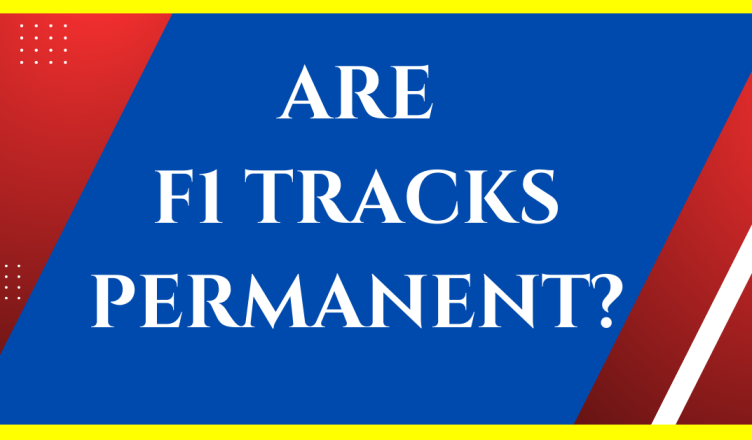Formula One (F1) is the pinnacle of motorsport, attracting millions of fans from around the world. One of the key components of F1 is the tracks on which the races are held. F1 tracks are the venues that host the races, and they come in various forms, including street circuits, road courses, and permanent circuits. In this article, we will explore the topic of F1 tracks and answer the question, “Are F1 tracks permanent?”
What are F1 Tracks?
Before we delve deeper into the topic, let’s define what F1 tracks are. F1 tracks are specially designed tracks that are used for Formula One races. These tracks are designed to meet the technical specifications of F1 and provide a challenging and exciting experience for both drivers and spectators. F1 tracks can be divided into three main categories: street circuits, road courses, and permanent circuits.
Street circuits are tracks that are temporarily created on public roads in cities. They are usually used for one or two races each year and are often challenging due to their tight corners and narrow straights. Road courses are permanent tracks that are built on public roads in rural areas. They are often faster and more flowing than street circuits. Permanent circuits are dedicated motorsport tracks that are designed and built specifically for racing. They are usually the fastest and most challenging type of F1 track.
The Evolution of F1 Tracks
F1 tracks have come a long way since the inception of the sport. The first F1 race was held in 1950 at Silverstone, which is still in use today. In the early days, F1 tracks were mostly road courses and street circuits, with very few permanent circuits. Over the years, the tracks have evolved to become faster and more challenging. The introduction of new technology, such as computer-aided design and simulation tools, has made it possible to design and build tracks that are more challenging than ever before.
Permanent F1 Tracks
Permanent F1 tracks are dedicated motorsport tracks that are designed and built specifically for racing. They are usually the fastest and most challenging type of F1 track. Examples of permanent F1 tracks include Silverstone in the UK, Spa-Francorchamps in Belgium, and the Circuit de Barcelona-Catalunya in Spain.
The advantages of permanent F1 tracks are that they are designed specifically for racing, which means they offer the best possible experience for drivers and spectators. They are usually safer than street circuits and road courses as they are designed with safety in mind. They also offer better facilities for teams and spectators, such as grandstands, hospitality areas, and paddock facilities.
However, there are also disadvantages to permanent F1 tracks. They are expensive to build and maintain, and they are often located far away from major cities, which can make them less accessible for spectators. Additionally, they can be less exciting than street circuits, as they offer less variation in terms of the type of corners and straights.
Non-Permanent F1 Tracks
Non-permanent F1 tracks are tracks that are created specifically for F1 races, but they are not permanent. They are usually street circuits or road courses that are built for one or two races each year. Examples of non-permanent F1 tracks include the Monaco Grand Prix, the Singapore Grand Prix, and the Azerbaijan Grand Prix.
The advantages of non-permanent F1 tracks are that they are often located in major cities, which makes them more accessible for spectators. They also offer a unique challenge for drivers, as the tracks are usually more technical and demanding than permanent circuits. Additionally, they are often more exciting for spectators, as they offer a greater sense of spectacle due to their location and design.
However, there are also disadvantages to non-permanent F1 tracks. They can be more dangerous than permanent circuits, as they are usually located on public roads and have less safety features. They also offer less space for teams and spectators, which means that the facilities are often less luxurious than those found at permanent circuits. Finally, they are more expensive to build and maintain than permanent circuits, as they require extensive setup and teardown each year.
Are F1 Tracks Permanent?
Now that we have explored the different types of F1 tracks and their advantages and disadvantages, let’s answer the question, “Are F1 tracks permanent?” The answer is that it depends on the track. Some F1 tracks are permanent, while others are non-permanent.
Permanent F1 tracks are dedicated motorsport tracks that are designed and built specifically for racing. They offer the best possible experience for drivers and spectators, but they are expensive to build and maintain.
Non-permanent F1 tracks are tracks that are created specifically for F1 races, but they are not permanent. They offer a unique challenge for drivers and are often more exciting for spectators, but they can be more dangerous and less luxurious than permanent circuits.
Conclusion
In conclusion, F1 tracks come in various forms, including street circuits, road courses, and permanent circuits. Permanent F1 tracks offer the best possible experience for drivers and spectators, but they are expensive to build and maintain. Non-permanent F1 tracks are often more exciting for spectators and offer a unique challenge for drivers, but they can be more dangerous and less luxurious than permanent circuits.
Ultimately, the decision to use a permanent or non-permanent F1 track depends on a variety of factors, including location, safety, and cost. Regardless of the type of track used, F1 races will continue to captivate audiences around the world with their speed, excitement, and skill.
